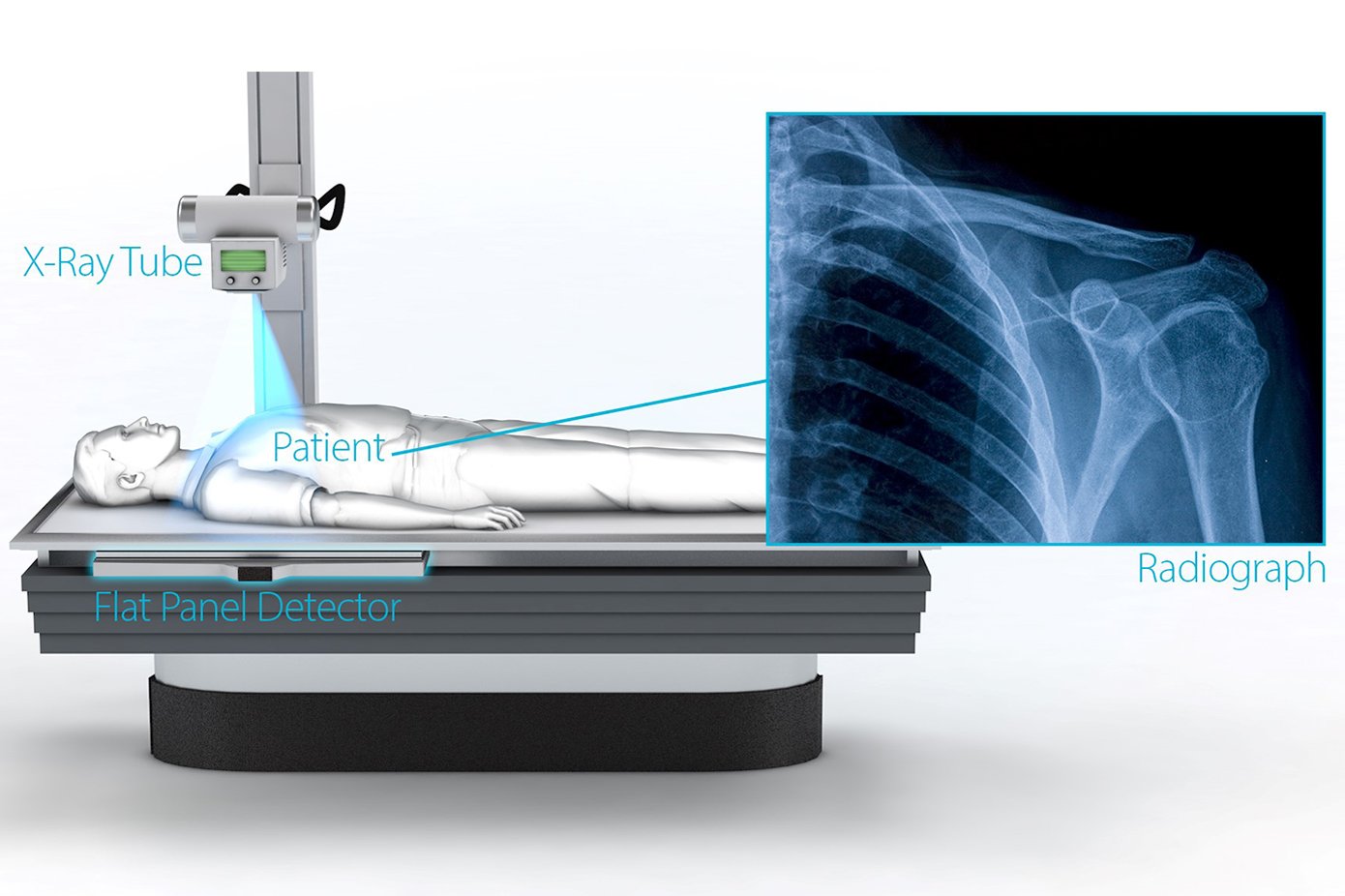At Maven Imaging, we’re in the business of x-rays. This unique technology has existed for over a hundred years and has gone through many changes throughout the years. Today, we sell digital x-ray systems. In this article, we’ll explore what those are, where they came from, and what the future looks like for this stellar medical technology.
What Is A Digital X-Ray?
A digital x-ray is an imaging technology that uses digital sensors to electronically capture and store x-ray images, instead of using traditional film. This technology has largely replaced the use of film in modern medical imaging because it offers a number of advantages over traditional film x-rays.
In digital x-rays, the x-ray machine uses a sensor to capture the image, and the resulting image is immediately available on a computer screen. This allows the radiologist or technician to view and analyze the image more quickly and easily than with film x-rays.
Digital x-rays also offer the ability to enhance and manipulate the image digitally, allowing for more accurate diagnosis and better visualization of subtle details. Additionally, digital x-rays require lower radiation doses than film x-rays, which makes them safer for patients.
Overall, digital x-rays provide a faster, more accurate, and safer way to diagnose and treat a wide range of medical conditions.
History Of The Digital X-Ray
The first computed tomography (CT) scanner was invented in 1972, which allowed for three-dimensional imaging of the body's internal structures. This paved the way for further developments in digital imaging and x-ray technology.
- In the 1980s, researchers began to experiment with digital radiography, which used electronic sensors to capture x-ray images. These early digital radiography systems were large, expensive, and not widely available.
- In the 1990s, the first commercially available digital x-ray systems were introduced. These systems used flat-panel detectors to capture x-ray images and were much smaller and more portable than earlier digital radiography systems.
- In the early 2000s, digital x-ray technology continued to evolve, with the development of new sensors and image processing techniques that improved image quality and reduced radiation exposure.
Today, digital x-ray technology is widely used in medical imaging and has largely replaced traditional film x-rays. Digital x-ray systems are faster, more accurate, and safer than traditional x-rays, and they offer the ability to manipulate images digitally, making them a valuable tool for diagnosis and treatment planning.
The history of digital x-ray technology is one of continuous innovation and improvement, driven by the need for more accurate and efficient medical imaging techniques.

Where Are Digital X-Rays Headed?
The future of digital x-rays looks very promising as technology continues to advance. What are some of the potential developments we could see?
3D Imaging
Three-dimensional imaging capabilities could become more common in the future, allowing doctors to view and analyze images from multiple angles and gain a more comprehensive understanding of a patient's condition.
Improved Image Quality
As technology improves, digital x-rays will likely produce even clearer and more detailed images, making it easier for medical professionals to diagnose and treat various conditions.
Portable and Wireless
While we’re already pretty much there, further advances in wireless technology could allow for portable x-ray machines that can be easily transported to disaster zones.
AI integration
As artificial intelligence continues to develop, it will be integrated with digital x-rays to help identify potential health issues and assist doctors in making accurate diagnoses.
Reduced Radiation Exposure
The ongoing effort to reduce radiation exposure for patients during x-ray exams is likely to continue, with new techniques and technologies being developed to further minimize the risk.
The future of digital x-rays looks very promising, with continued advancements in technology likely to lead to more accurate diagnoses, better patient outcomes, and improved efficiency in medical care.
Final Thoughts
Digital X-ray technology has advanced greatly since its inception, transforming the way medical professionals diagnose and treat patients. From faster image processing to enhanced safety and accuracy, digital X-rays have set a new standard in medical imaging. As we look to the future, the integration of innovations like 3D imaging, artificial intelligence, and portable systems promises even greater advancements.At Maven Imaging, we’re proud to be part of this evolving field, helping healthcare providers deliver better care through cutting-edge digital X-ray systems.

